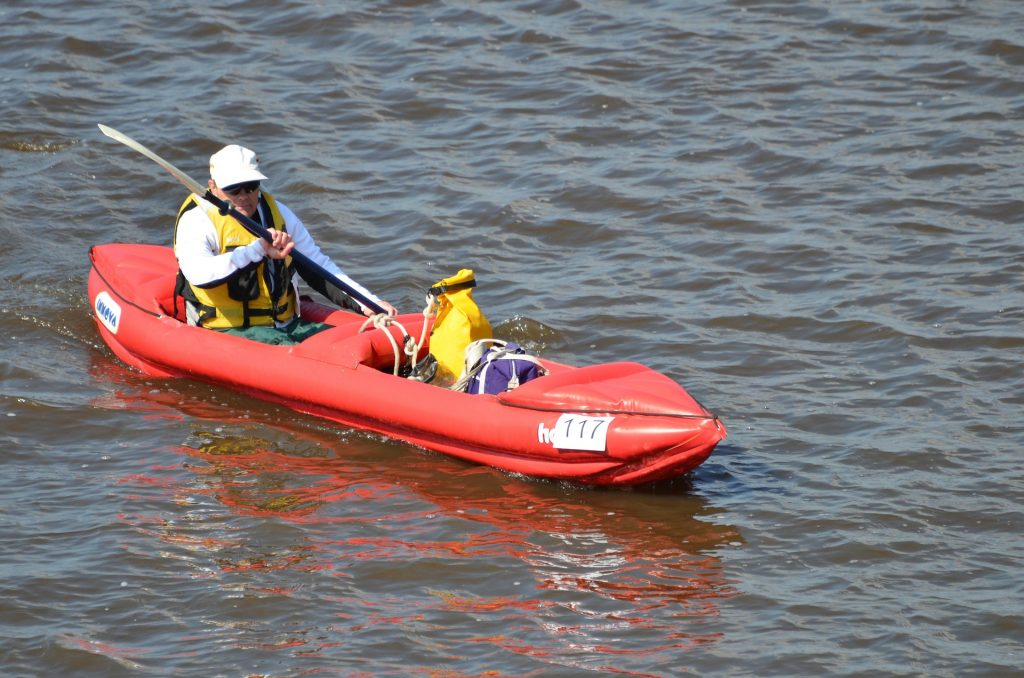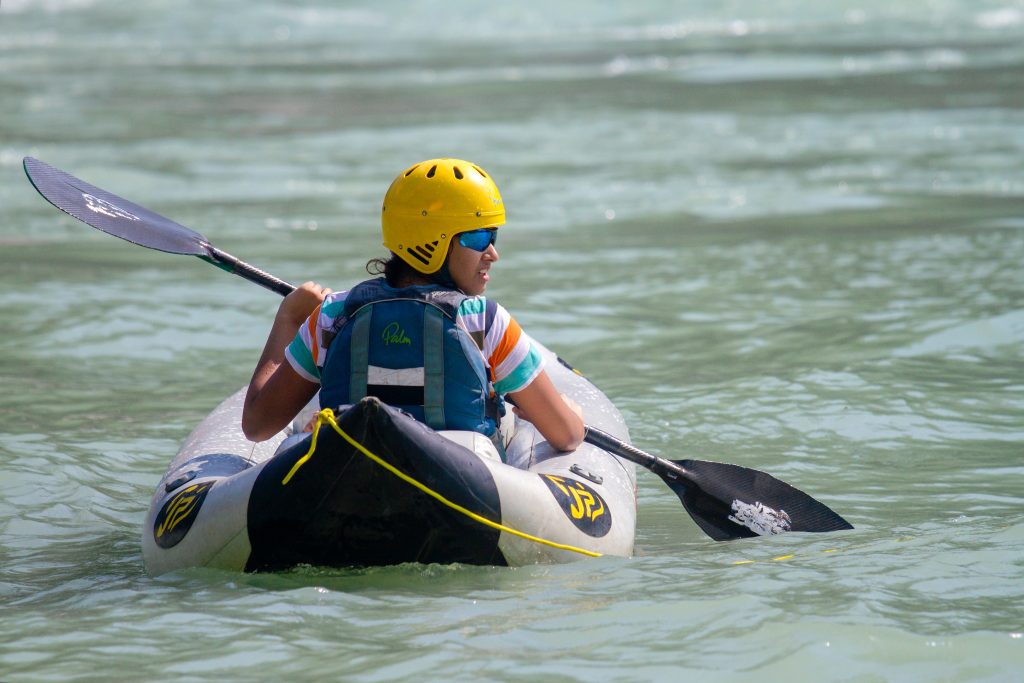You might think that getting yourself into kayaking is simple – you just buy a kayak and start paddling away. But there’s a lot to consider before you buy your first kayak, and that is deciding between an inflatable kayak vs a hardshell kayak.

If you were deciding on this between 15-20 years ago, going the hardshell route would be the obvious answer since most inflatable kayaks from then didn’t have much to offer.
The market for inflatable boats is much larger now – primarily due to how much they have improved in quality.
The inflatable kayaks available today are just as impressive and durable as hardshell ones with even more perks. In other words, you’ll need to weigh your options before you order your kayak.
If you’re looking to buy a kayak for the first time, you’re in the right place.
This article will show you everything you need to know about inflatable kayaks vs hardshell kayaks. By the end of this article, you’ll be able to decide which type of kayak you should buy.
Let’s dive right in.

Inflatable Kayaks: What You Need to Know
An inflatable kayak is pretty much what it sounds like – it’s an air-filled and foldable kayak made of plastic-based materials like PVC, Hypalon, or Nytrilon that you need to inflate before use.
These materials are generally cheaper than the ones used to make a hardshell kayak – which is why you can get your hands on an inflatable kayak for ~$200.
While the concept sounds similar to blow-up pool toys, the materials used to build an inflatable kayak are much more than just a thin sheet of plastic. In other words, today’s inflatable kayaks can be just as durable and robust as hardshell kayaks.
The inflatable kayaks you can buy today are also safer than you thought they would be. Most kayak manufacturers use a multi-chamber system on their kayak, which means the boat can stay afloat if one chamber gets punctured.
Some inflatable kayaks also have strategically positioned drainage holes which helps you with reducing water in the cockpit or hull. While inflatable kayaks are exposed to puncture risks, they also offer more comfort since the soft materials and air chambers help to negate a significant portion of the turbulence you feel on the water.
One of the greatest upsides of inflatable kayaks over hardshell ones is their portability. When deflated, you can roll up an inflatable kayak and pack it up neatly into a storage bag – which is roughly the size of a large duffel bag.
In short, inflatable kayaks are much easier for travel and storage than hardshell ones.
Want to know more about inflatable kayaks – find out more in our article – Are Inflatable Kayaks Any Good?
Hardshell Kayaks: What You Need To Know
Hardshell kayaks are what you would imagine a kayak would look and feel like. It’s a one-person boat where you sit inside of a cockpit.
And that assumption would be correct. But the sit-in models are just one of many types of hardshell kayaks. There are various other models, such as sit-on-top kayaks, fishing kayaks, and whitewater kayaks.
Hardshell kayaks are made of rigid materials such as plastic, fiberglass, and wood. From the materials alone, you can probably imagine hardshell kayaks being much heavier than inflatable ones.
The materials are also more expensive than the plastic-based materials used to build inflatable kayaks, which is why hardshell kayaks can cost north of $1,000 for the cheapest models.
However, the hardshell exterior helps make these boats more rigid, durable, and robust – which is why you see them being used on whitewater kayaking tournaments.

Inflatable vs Hardshell Kayaks: Which is Best for You?
When it comes to deciding between an inflatable kayak vs hardshell kayak, there are several factors that you should consider beforehand. Let’s go over them one by one:
1. Intended Use and Purpose
If this is your first time buying a kayak, it’s best to pick an inflatable kayak over a hardshell kayak. It’s because inflatable kayaks have the inherent buoyancy from the air chambers, which helps negate the risk of your boat drowning.
Inflatable kayaks are great for leisure paddling, fishing, and slow-paced exploration in various bodies of water – even the ocean. However, their air-based buoyancy is less likely to survive rough water environments with sharp rocks and rough edges.
Hardshell kayaks have fewer limitations on their material and build quality, making them more versatile than inflatable kayaks.
2. Portability
Inflatable kayaks are much more portable compared to their hardshell counterparts. It should be clear by now, but you can deflate your inflatable kayak and pack it up in a storage bag that typically comes with the purchasing package.
On the other hand, hardshell kayaks will require dedicated storage space and are much heavier than inflatable ones – they typically weigh around 55 pounds. For comparison, a good-quality inflatable kayak typically weighs about 30-35 pounds.
If portability and storage are among your primary concerns, you should consider getting an inflatable kayak over a hardshell kayak. But if you don’t mind dedicating a storage space and installing a roof rack on your car, a hardshell kayak is the way to go.

3. Kayak Capacity
Generally speaking, a kayak’s carrying capacity is relative to its size. The larger it is, the more it can carry. However, inflatable kayaks have a slight edge when it comes to carrying capacity. This is primarily because of their innate buoyancy of being air-filled boats.
But there is a variety of carrying capacity depending on the type of kayak. A typical one-person blow-up kayak can carry up to 350 pounds, slightly more than a hardshell kayak of similar size. Sit-on-top kayaks typically can carry up to 400 pounds. Fishing kayaks have the largest carrying capacity of up to 650+ pounds since they usually have a larger form factor to help you carry more gear.
Conclusion – Hardshell Kayak vs Inflatable Kayaks
Deciding between an inflatable kayak and a hardshell kayak can be tricky – but unless you’re a seasoned enthusiast who spends tons of time on the water, you should get an inflatable kayak.
Inflatable kayaks are much more beginner-friendly, portable, and affordable than hardshell kayaks. Even though they are made of air-filled chambers, today’s inflatable kayaks have durable materials which significantly reduce the risk of air leaks and punctures.
Picking between inflatable kayak vs hardshell kayak has been a decade-long debate among kayakers – but if this is your first time buying a kayak, go for the inflatable ones.
Related Posts
- Are Inflatable Kayaks Any Good?
If you have been using hardshell kayaks your whole life, you may notice that more…
- How To Store Your Inflatable Kayak
Whether you live near bodies of water or just love to go kayaking, you may…
- How to Patch Your Inflatable Kayak
Accidentally puncturing your inflatable kayak is not the end of the world. And it does…
